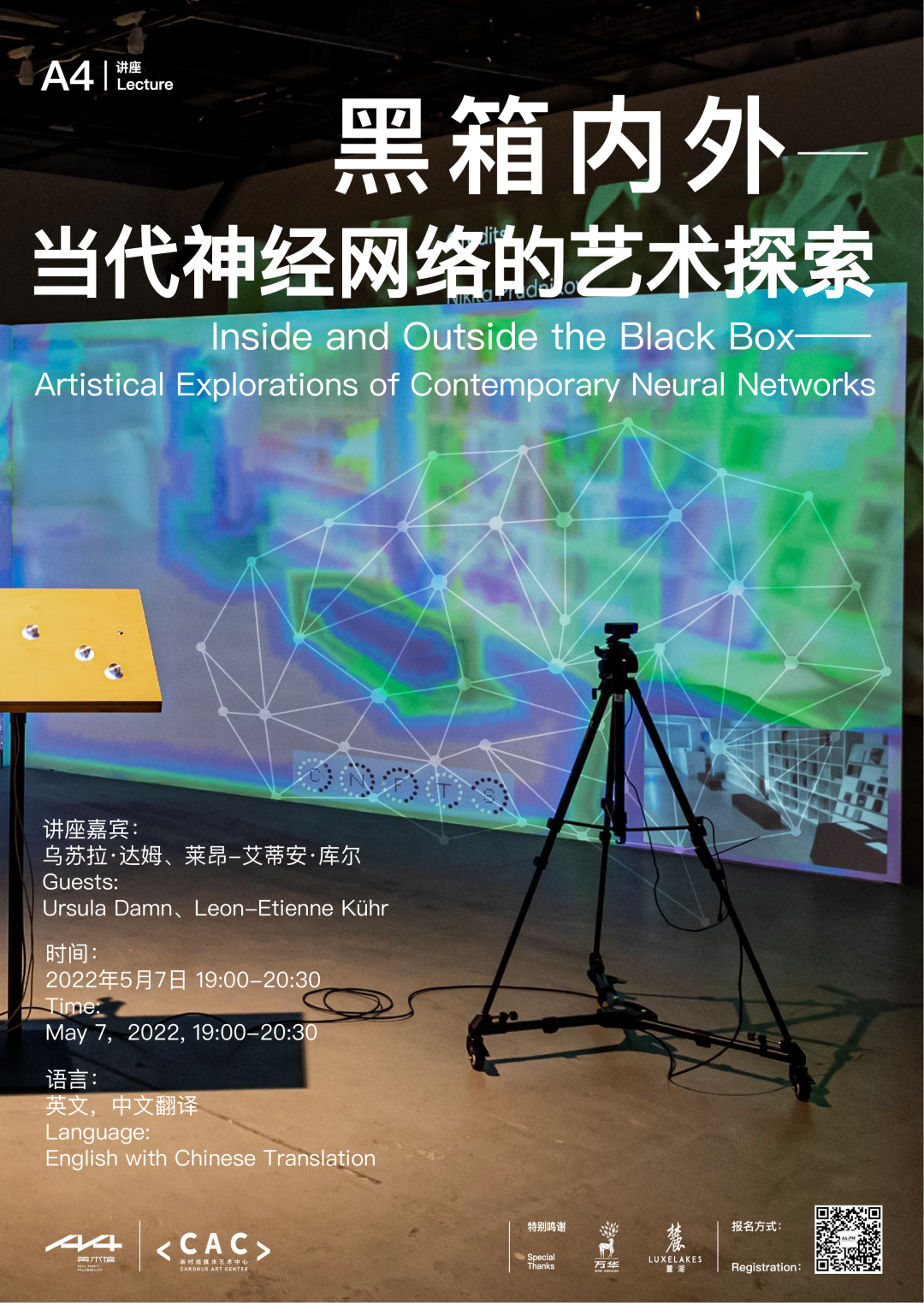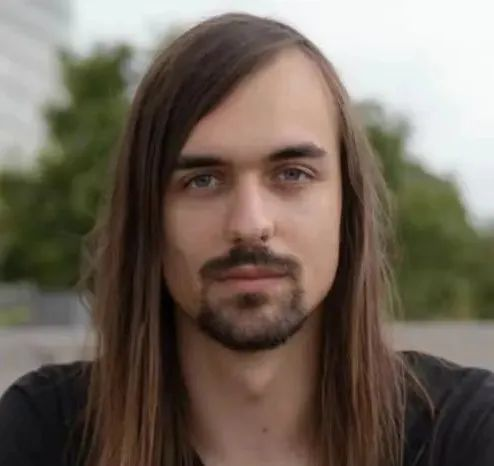Inside and Outside the Black Box:Artistical Explorations of Contemporary Neural Networks
Ursula Damm and Leon-Etienne Kühr are presenting their artworks exploring AI algorithms. Artificial Intelligence is examined from two perspectives: First, they provide a glimpse inside the AI black box by means of image artifacts, and second, they show how these algorithmic black boxes, when linked in unusual, playful ways, carry their modes of operation into the world of things.
Membrane is an installation by Ursula Damm which manipulates live footage of two cameras with the popular AI algorithm, the TGAN algorithm. The installation invites visitors to modify the parameters of the software on an operating panel. Not only offering the enjoyment of a colorful and noisy variation/deformation/picture of cityscapes (first camera) and the picture of the visitor itself (second camera), Membrane also allows viewers to experience the aesthetic dimension of Artificial Intelligence: are we capable of exploring the risks and chances of AI through our interface, on a visual level? Are we capable of sensually understanding algorithms, which are on purpose designed to reduce the complexity of our surroundings to an algorithmically defined desideratum?
Leon-Etienne Kühr goes one step further. He does not look at the outputs of the algorithms to understand their aesthetics but focuses on the claims of the algorithms and asks what kind of world they will build when software speaks to software. Machinecultures – a bathroom with a toilet and a sink is a series of artistic experiments on AI feedback loops chaining text-to-image- and image-to-text-transformations until both algorithms find a common equilibrium. The resulting equilibrium oftentimes surprises and is found in the most unlikely of places, thus challenging the human impulse of anthropomorphisation and questioning the future of machine-to-machine interaction. As many of the used algorithms are trained on internet-data, the resulting images and texts reflect on the culture that we create sometimes unintentionally by our digital presence. The culture of the machines might become our own: Somewhere between stock images and vacation pictures.
Date: 2022.5.7 (Sat.)
Time:7.00 p.m. – 8.30 p.m
Language: English (with Chinese translation)
Organized by
LUXELAKES·A4 Art Museum
Co-organized by
Chronus Art Center (CAC)


Ursula Damm
Ursula Damm is a media artist working at the intersection of art, technology and science. Most of Damm’s early works were sculptures and installations dealing with geometry and societal investigation of public space. She then more often engages with system interactions and works in the area of machine learning, genetic algorithms, neural networks, synthetic biology, among others. Since 2007, she holds the chair of Media Environments at Bauhaus-University Weimar. Damm’s works have been presented internationally in various exhibitions as well as art festivals. Her participated exhibitions in recent years include Insect Songs at Musikfestival Bern in 2021, When the butterflies of the soul flutter their wings at LABoral Centro de Arte y Creacion Industrial (Gijon, Spain) in 2020, Share Habitats at Ars electronica in 2019, Entangled Realities at HeK Basel in 2019, Seasons of Media Arts at ZKM in 2019, L.A.B: 2018 NCKU Bi2ennale – Technology and Art (Taiwan) in 2018, Transmediale in 2016. She has recently published Shared Habitats: A Cultural Inquiry into Living Spaces and Their Inhabitants (2021).

Leon-Etienne Kühr
Leon-Etienne Kühr began his studies at the Technical University of Berlin, where he pursued his childhood fascination for computers and started studying Digital Media and Technology in 2015. As his studies progressed his focus drifted away from the academic subjects of computer science and more towards the creative potential of computers and programming. After thriving in creative classes like computer graphics he decided in 2018 to switch to Bauhaus University to pursue a double-degree in computer science in media art. Thriving in the new found studies of media art he was offered a scholarship from the German Academic Scholarship Foundation and began to concentrate on the work with artificial intelligence passing his undergraduate degree about artificial intelligence feedback loops and their societal impact with flying colours. Since May he has been an artist in residence in Klagenfurt Austria to further conduct artistic research on the aesthetics of machine to machine communication. From October onwards he will study in the graduate program at the Academy of Media Arts in Cologne. In his works he explored human to machine / machine to machine interaction with a computer centric approach in search of new ways to think about our place in a digitised world.